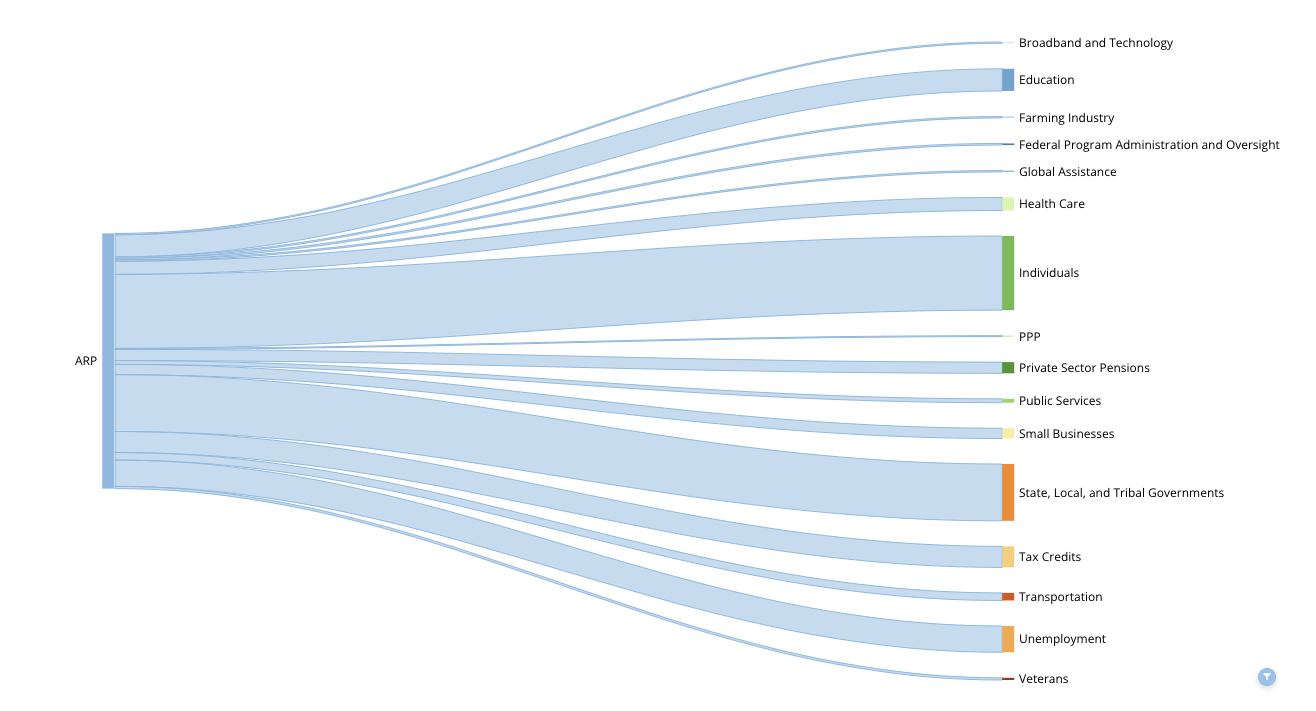“It’s a huge deal.”
That’s what Lisa Reijula told me after a call a few weeks ago to talk about the American Rescue Plan Act, or ARPA, which will funnel $350 billion specifically into state, local and tribal governments around the country. Reijula is the associate director for outreach and engagement for the Pandemic Response Accountability Committee, an independent federal oversight group.
When she found out that Poynter and IRE are training journalists to cover how and where that money’s going, she reached out. (PRAC has a similar mission and was created by the Coronavirus Aid, Relief, and Economic Security Act, also known as CARES, to promote transparency in how pandemic dollars get spent.)
RELATED WEBINAR: Sign up for Follow the Money: American Rescue Plan AMA on July 26, 2022.
How big of a deal?
Reijula put it like this.
In the recovery act from 2009, there was an $800 billion stimulus.
ARPA, which was signed into law one year ago, provides a total $1.9 trillion.
“There’s just a complexity and a scale and a scope here that is unprecedented.”

Visualization via PRAC
“This is effectively federal revenue sharing,” said Alan Berube, a senior fellow and deputy director of Brookings Metro. “We took money in in Washington and we’re basically handing it back out to states and cities and towns, and we haven’t done anything like that in almost 40 years.”
That means, basically, that journalists haven’t covered anything quite like this in a generation. Our three trainings will include experts in the specific topics and time to dig into data in small groups with IRE.
One of the reporters I’m learning from right now is MLive’s Taylor DesOrmeau. He’s a data reporter who’s covering how communities across Michigan are spending ARPA money. (And he’s one of two trainers for the first workshop.)
I asked DesOrmeau what he wants reporters who are getting ready to cover ARPA to know.
“Two things,” he said. “First off, there is hard data about how much your community is getting, regardless of how big or small it is. Take advantage of that and let that guide the reporting — you know how far $1 goes in your city/township/village and how it compares to the annual budget. Second, be aware of the recent change from the U.S. treasury, which basically allows communities to use the first $10 million for whatever they want (instead of having to use it for specific purposes). Most communities received less than $10 million, which means this is just free money for them to use as they please.”
For our first workshop about public health and the pandemic, we’ll also be joined by The Associated Press’ Kat Stafford, who will teach us how to get beyond the data and pair it with equitable reporting and sourcing.
“One of the biggest mistakes I see: Too much of an emphasis on just the data,” she said. “It’s easy to rely on data (and it’s often necessary!) to tell a health story but we must push ourselves to dig deeper as journalists. Some of the best advice I’ve ever received was to interview the data. You can’t just take it at face value and run with it. It’s a tool and an aspect of your reporting that should be used to tell the larger story at hand.”
So where should reporters even start? I have a few answers.
On March 29, Poynter and IRE will host the first of three free online workshops to help you cover ARPA and three specific topics: public health, public safety and infrastructure/environment. I’ll share what we’ve learned in this newsletter.
Here are some places to mine for information about your community:
-
Pandemicoversight.gov, from PRAC, includes state and local reports, an interactive map and complete data sets that you can download.
-
Local Government ARPA Investment Tracker from Brookings, tracks larger cities and counties with at least a quarter-million people that are required to report to the Treasury Department. The site also includes an index of experts.
-
USAspending.gov has a breakdown of states and total awarded amounts to explore.
-
Depending on your state, you might also find sources to help you follow the money by exploring the work of economic development partnerships such as Greater MSP in Minneapolis-St. Paul, which built a federal funding hub. (Disclosure: Greater MSP is also a Joyce Foundation grantee.)
Journalists will play an essential role in holding local governments accountable for how and where this money gets spent, Reijula said.
“The scale and scope of this is so big that we really need the press and the public to weigh in.”
Sign up for Follow the Money: American Rescue Plan
This free data journalism workshop series, in partnership with IRE, is designed to help local journalists track and analyze how the American Rescue Plan and other federal stimulus funds are used in their communities.
Join us for:
– Public health and pandemics: Tuesday, March 29, 2-3:30 p.m. ET
– Public safety, policing and beyond: Tuesday, April 12, 2-3:30 p.m. ET
– Infrastructure and environment: Tuesday, April 26, 2-3:30 p.m. ET







